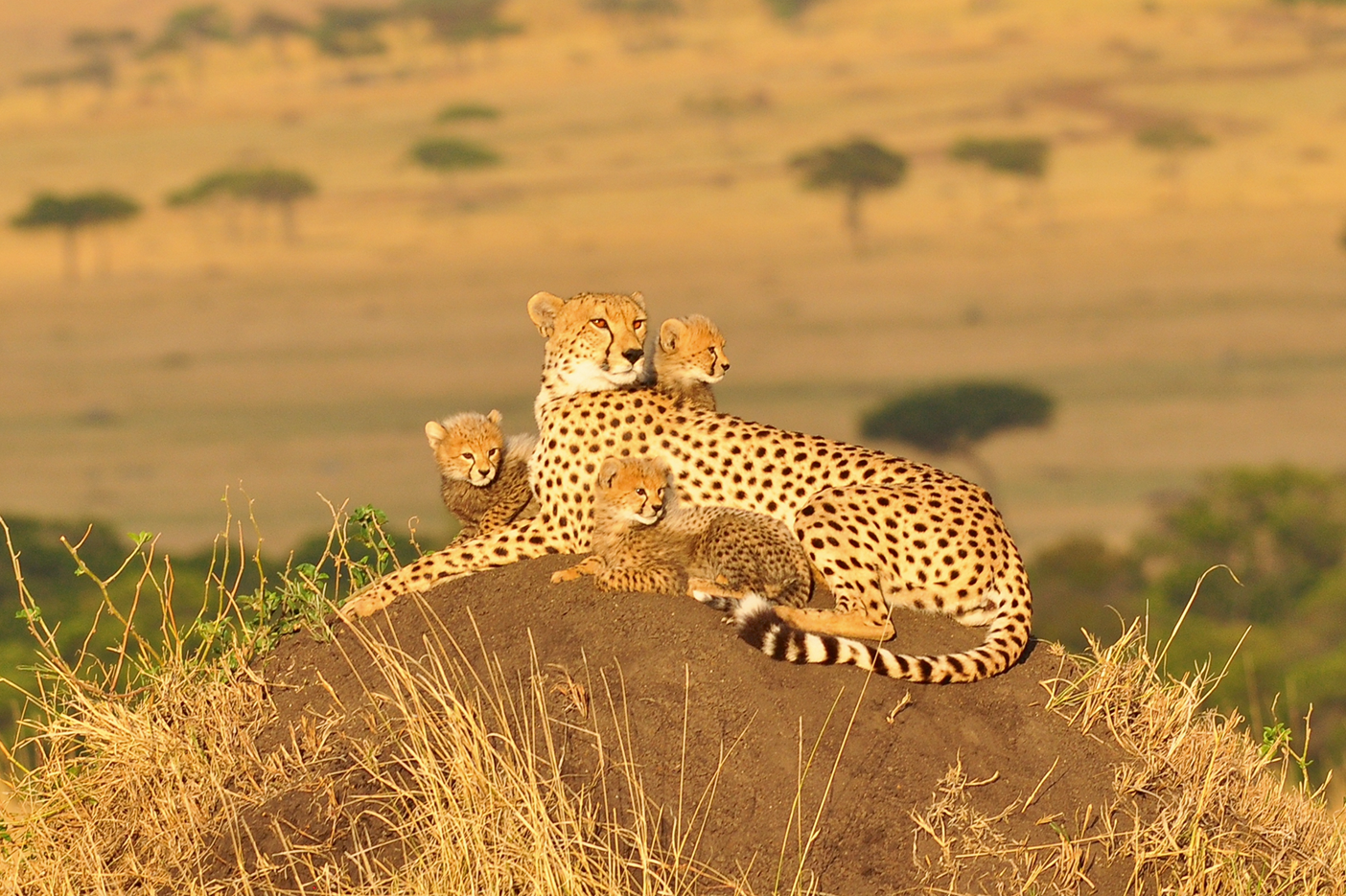The Speed Demons of the Savannah: A Comprehensive Look at Cheetahs in Africa
Cheetahs (Acinonyx jubatus) stand as iconic symbols of speed and agility in the African wilderness. Cheetahs in Africa | Facts ; These magnificent creatures are known for their slender bodies, distinctive spotted coats, and astonishing speed capabilities. This article aims to provide a detailed exploration of cheetahs, encompassing their physical characteristics, habitat, lifespan, and the intriguing aspects of their reproductive cycle.
Physical Characteristics: – Cheetahs in Africa | Facts
Cheetahs are well-adapted predators with a streamlined physique designed for swift movements. They possess a slender build, long legs, and a uniquely aerodynamic head. Their defining feature is the striking black tear stripes that run from the inner corners of their eyes down to the sides of their mouths. These markings help reduce glare from the sun and enhance their focus on prey during high-speed chases.
Their coat, adorned with distinctive black spots, acts as effective camouflage in the grassy savannahs where they primarily reside. Cheetahs exhibit sexual dimorphism, with males generally being larger and having slightly differently shaped heads compared to females.
Habitat and Distribution:
Cheetahs are predominantly found in sub-Saharan Africa, inhabiting a range of environments from open grasslands and savannahs to semi-desert regions. They are well-adapted to these landscapes, utilizing their remarkable speed to hunt and navigate through the terrain effectively.
While historically, cheetahs were widespread across Africa, their population has dwindled due to various factors, including habitat loss and human-wildlife conflict. Today, they are primarily concentrated in eastern and southern Africa, with protected reserves playing a crucial role in their conservation.
Behavior and Diet: – Cheetahs in Africa | Facts
Cheetahs are diurnal predators, meaning they are most active during the day. Unlike other big cats, cheetahs rely on speed rather than strength to hunt. They can reach speeds of up to 60-70 miles per hour in short bursts, making them the fastest land animals.
Their diet mainly consists of small to medium-sized ungulates, such as gazelles and impalas. Cheetahs rely on stealth and cover to get as close as possible to their prey before initiating a rapid sprint to catch it. After a successful hunt, they consume their kill quickly to avoid losing it to larger predators.
Lifespan and Reproduction:
In the wild, cheetahs typically have a lifespan of 8 to 12 years. Their reproductive behavior is noteworthy for its distinct aspects. Female cheetahs reach sexual maturity at around 20 to 24 months, while males mature a bit later. The gestation period lasts approximately 90 to 95 days, after which a female gives birth to a litter of two to eight cubs.
Cheetah mothers are unique in their approach to raising their offspring. Unlike other big cats, they often choose to raise their cubs alone, without the protection and assistance of a pride. This solitary rearing might be an adaptation to the nomadic lifestyle that cheetahs often lead.
Conservation Status and Threats:
Cheetahs face various threats, including habitat loss, human-wildlife conflict, and illegal wildlife trade. As a result, they are listed as vulnerable by the International Union for Conservation of Nature (IUCN). Conservation efforts are crucial to ensuring the survival of these remarkable creatures, involving habitat protection, anti-poaching measures, and community-based initiatives to reduce conflicts between humans and cheetahs.
Conclusion: – Cheetahs in Africa | Facts
Cheetahs, with their unmatched speed and distinctive appearance, are captivating creatures that play a vital role in maintaining the balance of ecosystems. As they navigate the challenges posed by a changing landscape, conservation efforts become increasingly essential to secure their future. Understanding the intricacies of their biology, behavior, and habitat is fundamental to fostering a deeper appreciation for these speed demons of the African savannah.








